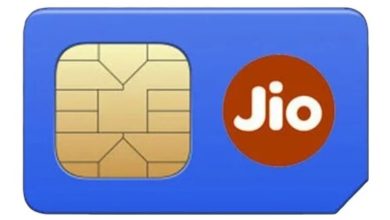Setting Clear Goals And Expectations :
Before embarking on any coaching initiative, it’s essential to define clear goals and expectations. Incorporating OKR (Objectives and Key Results) into this process ensures that both the coach and the participants are aligned on the desired outcomes and can focus their efforts on areas that will have the most significant impact on business performance.
In today’s competitive business landscape, small and medium-sized enterprises (SMEs) often face budget constraints when it comes to investing in coaching and training programs for their employees. However, effective coaching plays a crucial role in driving business growth and success. This article explores how SMEs can leverage coaching on a budget to achieve their goals and maximize their potential.
Introduction to Coaching for Small and Medium Businesses
Coaching is a strategic tool that helps individuals and teams enhance their skills, improve performance, and achieve professional development goals. For small and medium businesses, coaching can be particularly beneficial as it fosters a culture of continuous learning, boosts employee morale and engagement, and ultimately contributes to organizational success. Get the same stunning jobs as seen on our latest blog post
Importance of Coaching for Business Growth
Coaching is not just a luxury for large corporations; it is a necessity for businesses of all sizes. Effective coaching can lead to increased productivity, higher employee retention rates, improved communication and collaboration, and enhanced leadership capabilities. These factors directly contribute to business growth and profitability.
Understanding Budget Constraints
Small and medium businesses often operate with limited financial resources, making it challenging to allocate funds for coaching programs. However, instead of viewing budget constraints as a barrier, businesses can see them as an opportunity to explore cost-effective coaching solutions that deliver tangible results.
Tips for Effective Coaching on a Budget
Setting Clear Goals and Expectations
Before embarking on any coaching initiative, it’s essential to define clear goals and expectations. This ensures that both the coach and the participants are aligned on the desired outcomes and can focus their efforts on areas that will have the most significant impact on business performance.
Leveraging Technology and Online Resources
Technology has revolutionized the coaching landscape, making it more accessible and affordable for SMEs. Virtual coaching platforms, online courses, and webinars offer cost-effective alternatives to traditional face-to-face coaching sessions without compromising on quality.
Prioritizing Coaching Sessions
While it may be tempting to schedule numerous coaching sessions, especially when working with a limited budget, it’s crucial to prioritize quality over quantity. Focusing on targeted, high-impact coaching sessions can yield better results and maximize the value of the investment.
Encouraging Self-directed Learning
Empowering employees to take ownership of their learning and development through self-directed learning initiatives can be a cost-effective way to supplement formal coaching programs. Providing access to learning resources, mentorship opportunities, and peer-to-peer learning platforms can foster continuous growth and skill enhancement.
Monitoring Progress and Providing Feedback
Regularly tracking progress, measuring outcomes, and providing constructive feedback are essential components of effective coaching. By establishing clear metrics and feedback mechanisms, businesses can evaluate the success of coaching initiatives, identify areas for improvement, and make data-driven decisions.
Case Studies of Successful Coaching on a Budget
Several SMEs have successfully implemented budget-friendly coaching strategies with impressive results. For example, a small marketing agency invested in online leadership courses for its management team, resulting in improved team collaboration, increased client satisfaction, and higher revenue generation.
Overcoming Common Challenges
While coaching on a budget comes with its challenges, such as resource constraints and time limitations, businesses can overcome these obstacles by adopting a strategic and creative approach. By leveraging available resources, embracing innovation, and prioritizing continuous improvement, SMEs can maximize the impact of coaching initiatives and drive sustainable growth.
Tips for Effective Coaching Implementation
Tailoring Coaching to Individual Needs
Every employee has unique strengths, weaknesses, and learning styles. Tailoring coaching programs to individual needs ensures personalized development plans that yield better results and engagement.
Encouraging Peer Coaching and Mentoring
Implementing a peer coaching or mentoring program can be a cost-effective way to supplement formal coaching. Peer-to-peer learning fosters collaboration, knowledge sharing, and skill transfer within the organization.
Regularly Evaluating and Adjusting Coaching Strategies
Continuous evaluation of coaching strategies is essential to ensure they remain effective and aligned with business goals. Collecting feedback, analyzing outcomes, and making adjustments as needed ensures ongoing improvement and success.
Conclusion
Effective coaching is a powerful tool for small and medium businesses looking to enhance performance, develop talent, and achieve long-term success. By understanding budget constraints, leveraging technology, setting clear goals, and fostering a culture of continuous learning, businesses can unlock the full potential of their teams and drive business growth.





